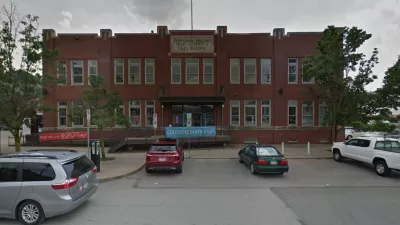The Pittsburgh Post-Gazette recently published an investigation of the city's efforts to buy and rehabilitate vacant properties in the troubled neighborhood of Homewood.

Ashley Murray and Joel Jacobs provide in-depth reporting on the city of Pittsburgh's efforts to revitalize the area of the city known as Homewood, "long plagued by blight and crime."
The city has spent $3.6 million buying vacant properties in treasurer's sales over unpaid taxes, "but dozens of the homes remain eyesores and, in some cases, the target of code violations by the city’s own inspectors," according to the article.
"The Pittsburgh Post-Gazette examined the records of 133 buildings owned by the city — including houses and storefronts — and found inspectors slapped violations on nearly 60% of them, including homes that were not only unfit for human habitation, but could place people in imminent danger," reports Murray and Jacobs.
While property owners can be punished for code violations, the city is not subject to the same enforcement.
The program of acquiring and improving vacant and blighted structures is taking on new importance as community groups have been pushing for "one of the most ambitious plans in the neighborhood’s history to promote green space, affordable housing and a business corridor to help an area that has undergone dramatic changes."
The city's vacant properties program is intended to "pave the way for development and the potential for new homes, parks and stores" under a land bank run by the Urban Redevelopment Authority. "But so far, most of the properties have not been turned over to public agencies or private investors since the city ramped up acquisitions a decade ago."
The source article includes infographics, more data, and specific examples of blight among the properties acquired by the city.

Planetizen Federal Action Tracker
A weekly monitor of how Trump’s orders and actions are impacting planners and planning in America.

San Francisco's School District Spent $105M To Build Affordable Housing for Teachers — And That's Just the Beginning
SFUSD joins a growing list of school districts using their land holdings to address housing affordability challenges faced by their own employees.

The Tiny, Adorable $7,000 Car Turning Japan Onto EVs
The single seat Mibot charges from a regular plug as quickly as an iPad, and is about half the price of an average EV.

Seattle's Plan for Adopting Driverless Cars
Equity, safety, accessibility and affordability are front of mind as the city prepares for robotaxis and other autonomous vehicles.

As Trump Phases Out FEMA, Is It Time to Flee the Floodplains?
With less federal funding available for disaster relief efforts, the need to relocate at-risk communities is more urgent than ever.

With Protected Lanes, 460% More People Commute by Bike
For those needing more ammo, more data proving what we already knew is here.
Urban Design for Planners 1: Software Tools
This six-course series explores essential urban design concepts using open source software and equips planners with the tools they need to participate fully in the urban design process.
Planning for Universal Design
Learn the tools for implementing Universal Design in planning regulations.
Smith Gee Studio
City of Charlotte
City of Camden Redevelopment Agency
City of Astoria
Transportation Research & Education Center (TREC) at Portland State University
US High Speed Rail Association
City of Camden Redevelopment Agency
Municipality of Princeton (NJ)




























